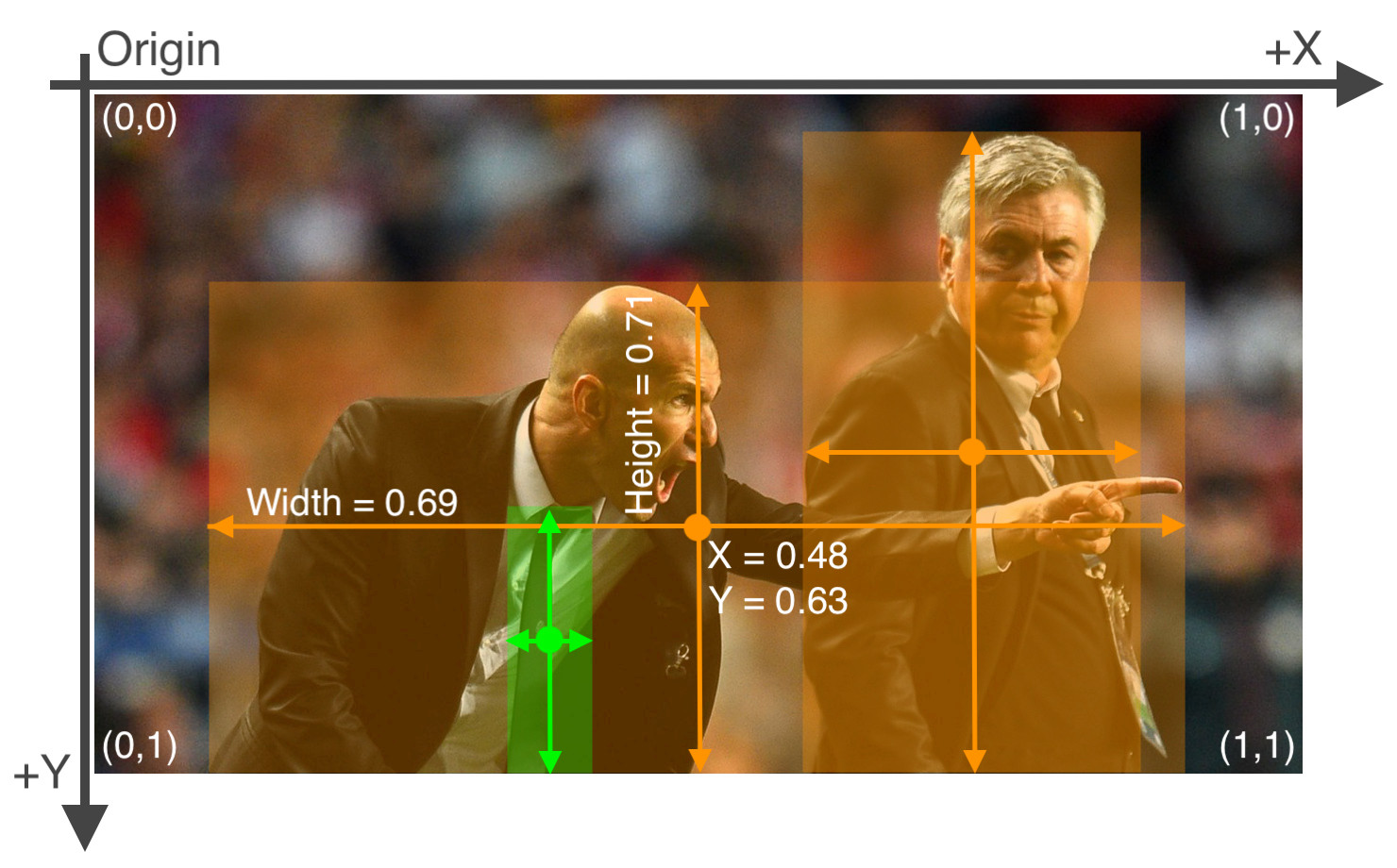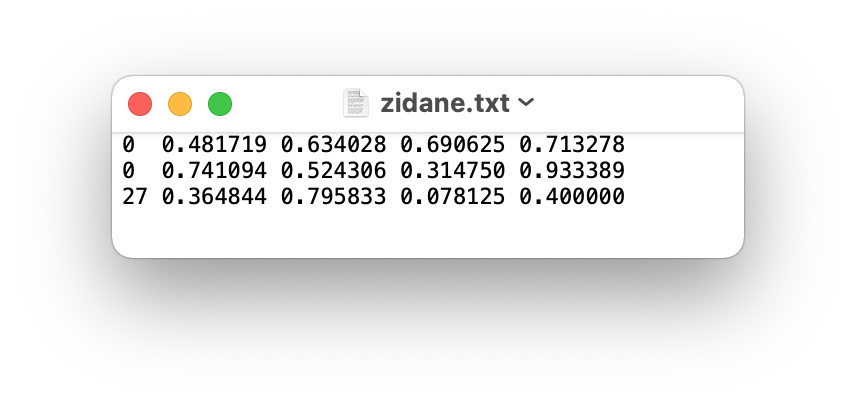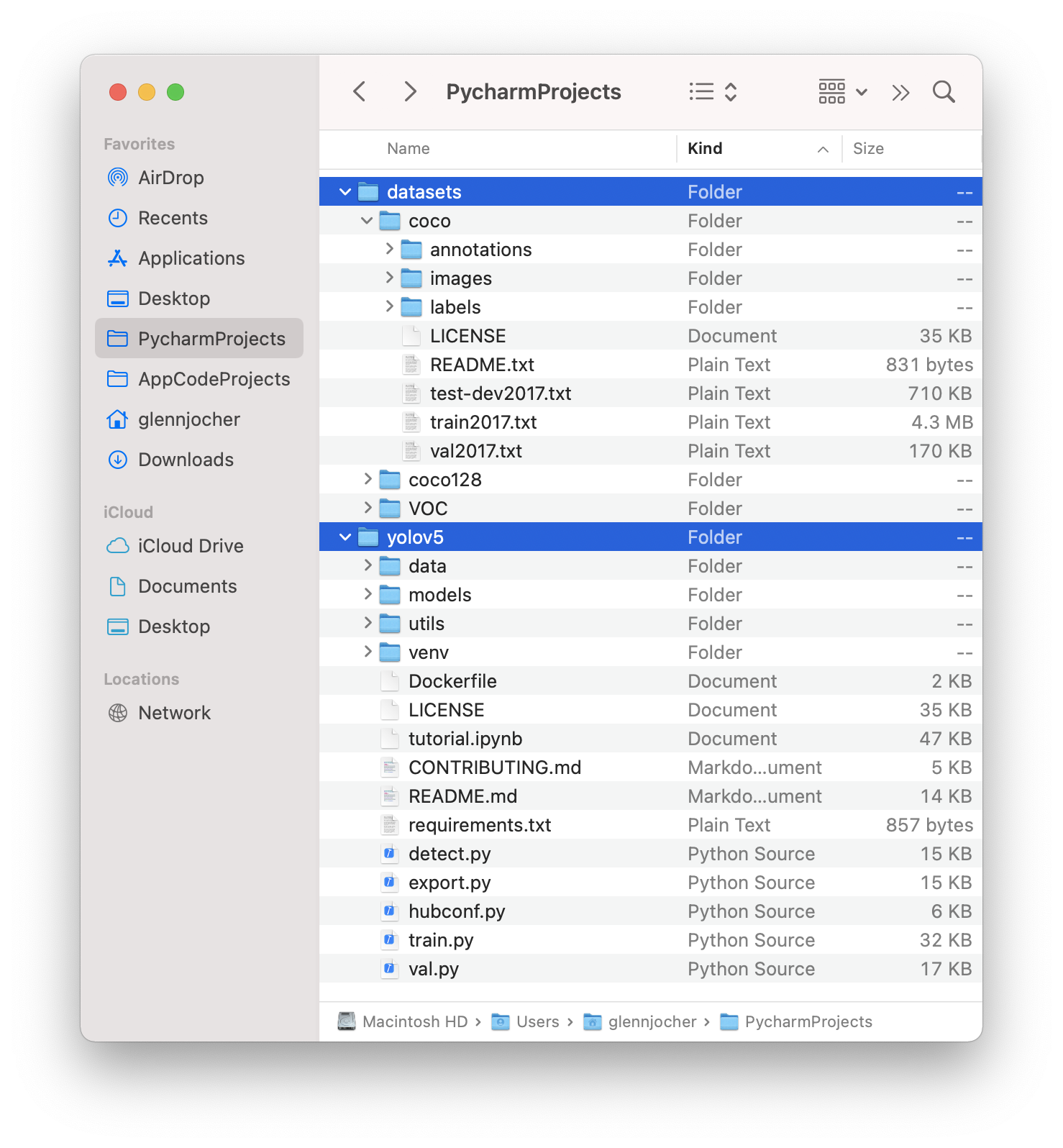@XiaoJiNu it can not find your labels. You need to specify correct label paths. See the custom training tutorial to get started, and follow the coco128 example: https://docs.ultralytics.com/yolov5/tutorials/train_custom_data
Closed XiaoJiNu closed 4 years ago
@XiaoJiNu it can not find your labels. You need to specify correct label paths. See the custom training tutorial to get started, and follow the coco128 example: https://docs.ultralytics.com/yolov5/tutorials/train_custom_data
@glenn-jocher Thank you, I found the bug arosed from labels had not matched any anchor
This issue has been automatically marked as stale because it has not had recent activity. It will be closed if no further activity occurs. Thank you for your contributions.
This is my images folders structure: -- datasest/db/images/train/img1.png -- datasest/db/images/train/img2.png -- datasest/db/images/valid/img3.png -- datasest/db/images/valid/img4.png
I solved it placing my labels this way: -- datasest/db/labels/train/img1.txt -- datasest/db/labels/train/img2.txt -- datasest/db/labels/valid/img3.txt -- datasest/db/labels/valid/img4.txt
@Pcamellon see Train Custom Data tutorial for dataset instructions:
Good luck 🍀 and let us know if you have any other questions!
Hello, when I trained my own custom dataset, it told me that Can not train without labels. How can I solve this problem ? I didnt understand where I should modify
@Yamana06 👋 Hello! Thanks for asking about YOLOv5 🚀 dataset formatting. To train correctly your data must be in YOLOv5 format, and you must have labels, otherwise there is nothing for YOLOv5 to learn. Please see our Train Custom Data tutorial for full documentation on dataset setup and all steps required to start training your first model. A few excerpts from the tutorial:
COCO128 is an example small tutorial dataset composed of the first 128 images in COCO train2017. These same 128 images are used for both training and validation to verify our training pipeline is capable of overfitting. data/coco128.yaml, shown below, is the dataset config file that defines 1) the dataset root directory path and relative paths to train / val / test image directories (or *.txt files with image paths), 2) the number of classes nc and 3) a list of class names:
# Train/val/test sets as 1) dir: path/to/imgs, 2) file: path/to/imgs.txt, or 3) list: [path/to/imgs1, path/to/imgs2, ..]
path: ../datasets/coco128 # dataset root dir
train: images/train2017 # train images (relative to 'path') 128 images
val: images/train2017 # val images (relative to 'path') 128 images
test: # test images (optional)
# Classes
nc: 80 # number of classes
names: [ 'person', 'bicycle', 'car', 'motorcycle', 'airplane', 'bus', 'train', 'truck', 'boat', 'traffic light',
'fire hydrant', 'stop sign', 'parking meter', 'bench', 'bird', 'cat', 'dog', 'horse', 'sheep', 'cow',
'elephant', 'bear', 'zebra', 'giraffe', 'backpack', 'umbrella', 'handbag', 'tie', 'suitcase', 'frisbee',
'skis', 'snowboard', 'sports ball', 'kite', 'baseball bat', 'baseball glove', 'skateboard', 'surfboard',
'tennis racket', 'bottle', 'wine glass', 'cup', 'fork', 'knife', 'spoon', 'bowl', 'banana', 'apple',
'sandwich', 'orange', 'broccoli', 'carrot', 'hot dog', 'pizza', 'donut', 'cake', 'chair', 'couch',
'potted plant', 'bed', 'dining table', 'toilet', 'tv', 'laptop', 'mouse', 'remote', 'keyboard', 'cell phone',
'microwave', 'oven', 'toaster', 'sink', 'refrigerator', 'book', 'clock', 'vase', 'scissors', 'teddy bear',
'hair drier', 'toothbrush' ] # class namesAfter using a tool like Roboflow Annotate to label your images, export your labels to YOLO format, with one *.txt file per image (if no objects in image, no *.txt file is required). The *.txt file specifications are:
class x_center y_center width height format.x_center and width by image width, and y_center and height by image height.
The label file corresponding to the above image contains 2 persons (class 0) and a tie (class 27):

Organize your train and val images and labels according to the example below. YOLOv5 assumes /coco128 is inside a /datasets directory next to the /yolov5 directory. YOLOv5 locates labels automatically for each image by replacing the last instance of /images/ in each image path with /labels/. For example:
../datasets/coco128/images/im0.jpg # image
../datasets/coco128/labels/im0.txt # label
Good luck 🍀 and let us know if you have any other questions!
I am facing same issue. How can I solve it? I have placed images and labels in correct path. sample/images/train/img.jpg sample/labels/train/img.txt
sample/images/test/img.jpg sample/labels/test/img.txt
@kishcs 👋 Hello! Thanks for asking about YOLOv5 🚀 dataset formatting. To train correctly your data must be in YOLOv5 format. Please see our Train Custom Data tutorial for full documentation on dataset setup and all steps required to start training your first model. A few excerpts from the tutorial:
COCO128 is an example small tutorial dataset composed of the first 128 images in COCO train2017. These same 128 images are used for both training and validation to verify our training pipeline is capable of overfitting. data/coco128.yaml, shown below, is the dataset config file that defines 1) the dataset root directory path and relative paths to train / val / test image directories (or *.txt files with image paths), 2) the number of classes nc and 3) a list of class names:
# Train/val/test sets as 1) dir: path/to/imgs, 2) file: path/to/imgs.txt, or 3) list: [path/to/imgs1, path/to/imgs2, ..]
path: ../datasets/coco128 # dataset root dir
train: images/train2017 # train images (relative to 'path') 128 images
val: images/train2017 # val images (relative to 'path') 128 images
test: # test images (optional)
# Classes
nc: 80 # number of classes
names: [ 'person', 'bicycle', 'car', 'motorcycle', 'airplane', 'bus', 'train', 'truck', 'boat', 'traffic light',
'fire hydrant', 'stop sign', 'parking meter', 'bench', 'bird', 'cat', 'dog', 'horse', 'sheep', 'cow',
'elephant', 'bear', 'zebra', 'giraffe', 'backpack', 'umbrella', 'handbag', 'tie', 'suitcase', 'frisbee',
'skis', 'snowboard', 'sports ball', 'kite', 'baseball bat', 'baseball glove', 'skateboard', 'surfboard',
'tennis racket', 'bottle', 'wine glass', 'cup', 'fork', 'knife', 'spoon', 'bowl', 'banana', 'apple',
'sandwich', 'orange', 'broccoli', 'carrot', 'hot dog', 'pizza', 'donut', 'cake', 'chair', 'couch',
'potted plant', 'bed', 'dining table', 'toilet', 'tv', 'laptop', 'mouse', 'remote', 'keyboard', 'cell phone',
'microwave', 'oven', 'toaster', 'sink', 'refrigerator', 'book', 'clock', 'vase', 'scissors', 'teddy bear',
'hair drier', 'toothbrush' ] # class namesAfter using a tool like Roboflow Annotate to label your images, export your labels to YOLO format, with one *.txt file per image (if no objects in image, no *.txt file is required). The *.txt file specifications are:
class x_center y_center width height format.x_center and width by image width, and y_center and height by image height.
The label file corresponding to the above image contains 2 persons (class 0) and a tie (class 27):

Organize your train and val images and labels according to the example below. YOLOv5 assumes /coco128 is inside a /datasets directory next to the /yolov5 directory. YOLOv5 locates labels automatically for each image by replacing the last instance of /images/ in each image path with /labels/. For example:
../datasets/coco128/images/im0.jpg # image
../datasets/coco128/labels/im0.txt # label
Good luck 🍀 and let us know if you have any other questions!
I am facing the same issue. I understand how to label images and all that. The question is regarding a specific error and has a specific answer.
I'm facing the same issue. I have constructed the .txt files with the yolov5 coordinates format (exactly like the Tutorial), but when trying to train the yolov5 model I get:
AssertionError: train: No labels found in /mnt/d/User/NicoSan/NicoSan/Personales/AICarreer/AIBootcamp/Repos/FinalProject/data/train_test_SKU/labels/train.cache, can not start training. See https://docs.ultralytics.com/yolov5/tutorials/train_custom_data
@sannicosan 👋 Hello! Thanks for asking about YOLOv5 🚀 dataset formatting. To train correctly your data must be in YOLOv5 format. Please see our Train Custom Data tutorial for full documentation on dataset setup and all steps required to start training your first model. A few excerpts from the tutorial:
COCO128 is an example small tutorial dataset composed of the first 128 images in COCO train2017. These same 128 images are used for both training and validation to verify our training pipeline is capable of overfitting. data/coco128.yaml, shown below, is the dataset config file that defines 1) the dataset root directory path and relative paths to train / val / test image directories (or *.txt files with image paths) and 2) a class names dictionary:
# Train/val/test sets as 1) dir: path/to/imgs, 2) file: path/to/imgs.txt, or 3) list: [path/to/imgs1, path/to/imgs2, ..]
path: ../datasets/coco128 # dataset root dir
train: images/train2017 # train images (relative to 'path') 128 images
val: images/train2017 # val images (relative to 'path') 128 images
test: # test images (optional)
# Classes (80 COCO classes)
names:
0: person
1: bicycle
2: car
...
77: teddy bear
78: hair drier
79: toothbrush
After using a tool like Roboflow Annotate to label your images, export your labels to YOLO format, with one *.txt file per image (if no objects in image, no *.txt file is required). The *.txt file specifications are:
class x_center y_center width height format.x_center and width by image width, and y_center and height by image height.
The label file corresponding to the above image contains 2 persons (class 0) and a tie (class 27):

Organize your train and val images and labels according to the example below. YOLOv5 assumes /coco128 is inside a /datasets directory next to the /yolov5 directory. YOLOv5 locates labels automatically for each image by replacing the last instance of /images/ in each image path with /labels/. For example:
../datasets/coco128/images/im0.jpg # image
../datasets/coco128/labels/im0.txt # label
Good luck 🍀 and let us know if you have any other questions!
i got the same issue and the problem was at _img2labelpaths() as the function shows clearly, it changes your folder name from images/ to labels/. if your custom dataset is not in a folder "images" you won't face the issue
Thanks for sharing your experience and solution, @chacoff! This will definitely help others who might encounter a similar issue. If you have any other questions or need further assistance, feel free to ask! Good luck with your YOLOv5 project! 🚀
Hi, when I trained my own custom dataset, it told me that Can not train without labels. How can I solve this problem ?There is one class object to detect and many images don't have any object